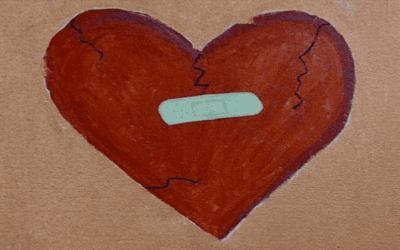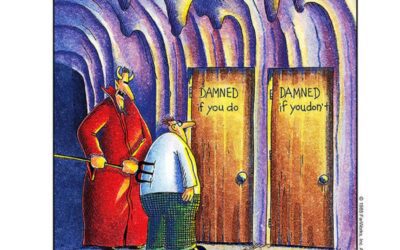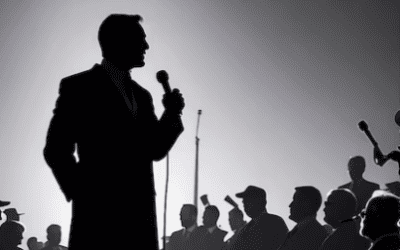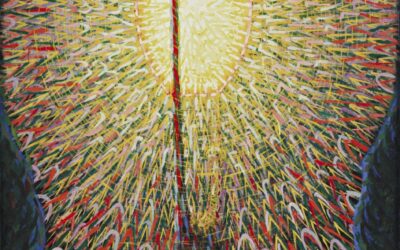What was the “Sullivans” Psychotherapy Cult?
The Sullivanian Institute, a notorious psychotherapy cult that operated in New York City from the 1950s through the 1980s, exemplifies the adage that in cults, nothing good is original and nothing original is good. Many of its core practices and beliefs were repackaged from other psychological models, religious traditions, and scientific theories:
- The emphasis on interpersonal dynamics in therapy sessions was adapted from the work of psychiatrist Harry Stack Sullivan, after whom the group was named. However, the Sullivanians took Sullivan’s techniques in a far more aggressive, intrusive direction.
- The rejection of the nuclear family and emphasis on communal living and non-monogamy echoed countercultural movements of the 1960s-70s. However, the Sullivanians’ model served to make members dependent on the group.
- Saul Newton’s communist background informed the Sullivanians’ critique of capitalist society and nuclear family structures. However, Newton demanded total personal loyalty and imposed strict social control, betraying genuine Marxist principles.
- The “self-actualization” jargon used by the group paralleled the humanistic psychology of Abraham Maslow and Carl Rogers. But in practice, the Sullivanians demolished individual autonomy.
The Enigmatic Leader: Saul Newton
The Sullivanian Institute revolved around its magnetic yet mercurial leader, Saul Newton. A former communist organizer and veteran of the Spanish Civil War, Newton had a forceful, combative personality. Though lacking formal psychological training, he claimed therapeutic expertise and demanded total authority within the group he co-founded with his wife Jane Pearce in 1957.
Newton’s own volatile, neglectful upbringing likely shaped his hostility toward conventional family structures. Sexually ravenous, he incessantly pursued female patients. Yet he remained a remote, feared figure to many in his cult, even as he made their life choices for them.
Like many cult leaders, Newton relied on tried-and-true control tactics:
- Love bombing and sexual seduction to draw in new members
- Isolating members from outside friends and family
- Constant supervision and criticism of members’ personal lives
- Financial exploitation through fees, dues, and pressured “contributions”
- Verbal and physical abuse to subdue doubters
However, the Sullivanians’ therapeutic framework enabled unique forms of emotional manipulation. In intense confrontational sessions, therapists demolished patients’ self-esteem, ensuring dependence on the group. The mandate to take multiple sexual partners obliterated personal boundaries. Children were ripped away from mothers to disrupt attachment. All of these tactics served Newton’s agenda of domination.
The Rise and Fall
The 1960s-70s proved a fertile time for the Sullivanians’ growth. The upheaval of the era – assassinations, riots, Vietnam, Watergate – left many young people hungry for belonging. Disaffection with the nuclear family and traditional institutions made communal living appealing. Newton cannily exploited these cultural currents:
1957 – Saul Newton and Jane Pearce found the Sullivan Institute for Research in Psychoanalysis
Early 1960s – Group gains dozens of members among disaffected NYC youth; begins communal apartment living
Late 1960s/Early 1970s – Membership explodes; major property acquisitions; strict controls on sex/family introduced
1972 – Peak membership of 600+ members across residential communes
1976 – “Fourth Wall Repertory Company” experimental theater opens, recruiting more members
Late 1970s – Media scrutiny increases; some leaders face misconduct probes and lose therapy licenses
1980s – Defections rise as horrific child abuse exposed; membership declines sharply
1991 – Newton dies; core group fragments into small sects
Preying on the Zeitgeist
The Sullivanians deftly tapped into the late 20th century zeitgeist. The conformity and consumerism of the 1950s birthed a restless counterculture eager for alternatives. Feminism and gay liberation challenged traditional gender and family norms. The “Me Generation” turned to therapy for self-knowledge and actualization.
The Sullivanians promised to overthrow the “bourgeois family” that produced neurosis and repression. Recruits found an instant social circle and an explanation for their personal struggles in Sullivanian ideology. The group’s free love ethos permitted sexual exploration and adventure.
On a deeper psychological level, the Sullivanians exploited a generation’s “father hunger”, offering Newton as an all-powerful patriarch to obey and adore. For those raised by controlling parents, the group replicated familiar family dynamics. The Sullivanians’ attack on the nuclear family actually infantilized members, making them dependent on the “family” of the cult.
Aftermath and Deprogramming
Leaving the Sullivanians often proved a long, painful process. Ex-members had to rebuild eroded social ties and recover obliterated boundaries. Some required extensive therapy to heal from the emotional, sexual, and financial abuse they endured. A few, like the actress Sharon Gans, remained in therapy with Newton until his death in 1991.
Some “lifers” remained enthralled to the end, forming derivative groups after the Sullivanians collapsed under outside pressure and internal dissension in the late 1980s. Die-hards saw Newton’s 1991 demise as a spiritual crisis requiring recommitment to his teachings, however abusive.
Lessons and Parallels
The Sullivanians used coercive tactics common to many cults:
- Love bombing and instant intimacy to seduce recruits
- Isolating members in a closed social world
- Attacking natural family ties as evil or unhealthy
- Forcing confessions and self-criticism to ensure compliance
- Sowing paranoia about the outside world to prevent defection
- Sexual and financial exploitation of members
- Child abuse and neglect in the name of “enlightenment”
- Glorifying the leader as an infallible savior/father figure
The Sullivanian story shows how groups can pervert the language of liberation to impose authoritarian control. Similar corruption of high ideals fueled Jonestown, the Children of God, Lifespring, and many more 20th century cults.
We must remain alert to the ways charismatic, unaccountable leaders exploit cultural change and personal vulnerability. Awareness of cult warning signs – demands for unquestioning obedience, attacks on outside ties, invasions of intimate life – is the first defense. Maintaining strong family bonds, a diverse social network, and a questioning mind are crucial antidotes to totalistic control.
Further Reading
- Siskind, Amy B. “The Sullivan Institute/Fourth Wall Community: The Relationship of Radical Individualism and Authoritarianism.” Westport, CT: Praeger, 2003.
- Shaw, Daniel. “Traumatic Abuse in Cults: A Psychoanalytic Perspective” Cultic Studies Journal Vol 28, 2011 p101
- Hume, Lynne. “Them and Us: Cult Thinking and the Terrorist Threat.” Lincoln, NE: Authors Choice Press, 2004.
- Lalich, Janja. “Bounded Choice: True Believers and Charismatic Cults.” Berkeley, CA: University of California Press, 2004.
- Shaw, Daniel. “The Relational System of the Traumatizing Narcissist.” International Journal of Cultic Studies Vol 5, 2014 pp 4-11
- Cushman, Philip. “The Empty Self: C.G. Jung and the Disenchantment of the West.” Psychohistory Review, 13, 1984, pp 12-24.
- Bellah, Robert N., et al. “Habits of the Heart: Individualism and Commitment in American Life.” Berkeley, CA: University of California Press, 1985.
- Curtis, Adam. “The Century of the Self.” BBC TV documentary series, 2002.
Other Cults and Conspiracy Theories


























0 Comments